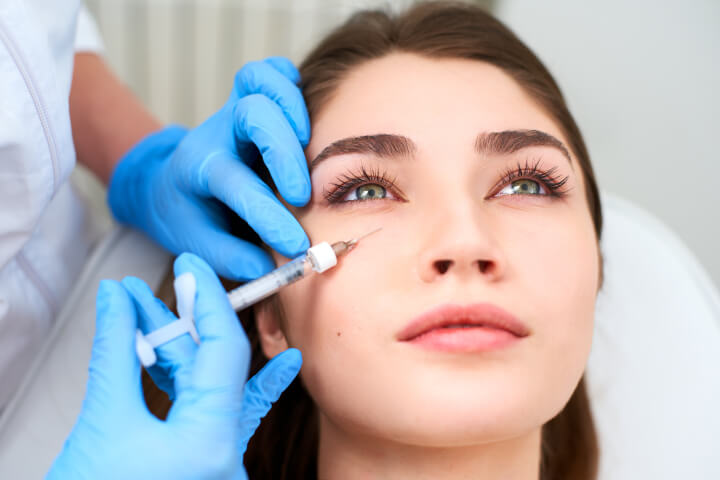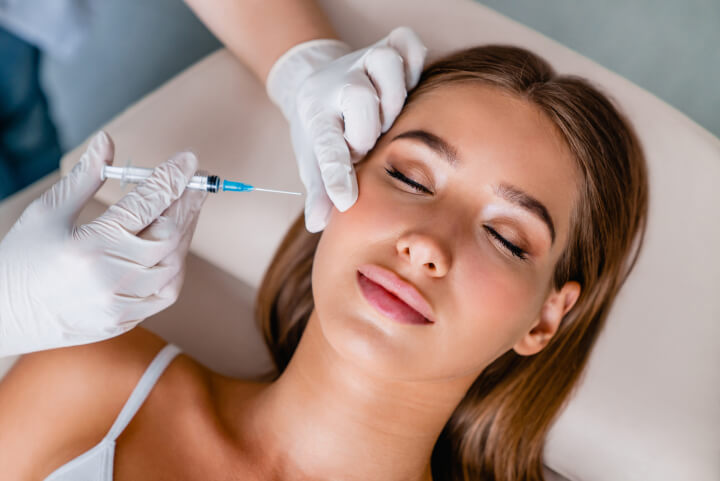
Botox and dermal filler treatments are popular cosmetic injectables that help remove wrinkles and fine lines in the least invasive way possible. Both treatments are simple, convenient, and have zero downtime unlike plastic surgery. But although the cosmetic procedure is uncomplicated, one thing that people need to follow post-treatment is maintaining an upright position.
So how long do you have to keep your head elevated or upright after receiving a facial filler or Botox injection? Patients should wait until 4 to 6 hours after the treatment before they can move, bend, or lie their heads down. Staying in an upright position will prevent the increase of blood flow and risk of diffusion in the treated area and will allow the filler material or neurotoxin injection to set in and produce desired effects.
Learn More: Which Filler Should You Get To Avoid the Tyndall Effect?
Aesthetica can assist you with all your beauty needs, helping you achieve your maximum beauty and aesthetic potential. Call or contact us today to learn more about our cosmetic services.
It’s possible to return to your normal activities without any downtime after getting injectable fillers and Botox treatment for wrinkles. However, you may experience common side effects like injection site pain, swelling, bruising, and tenderness which is why a patient is advised to take it easy and be careful in accidentally touching or putting pressure on the injected area.
Most cosmetic doctors recommend keeping your head in an upright position for at least 4 to 6 hours after the injection. It’s important to observe this when you receive the treatment in the upper facial area such as the forehead to avoid unintentional migration of toxins to other facial muscles which can reduce its effectiveness in the intended treatment area.
You should also limit napping, sleeping, or lying down immediately after the injection procedure. While it’s common to think about resting, you should also wait for several hours after injection before you can lie on the bed. When you can finally relax on the bed, try to avoid lying on the side and put extra pillows around you to prevent moving around while sleeping.
To understand why keeping your head upright is important, let’s look at the basics of Botox and dermal fillers as cosmetic procedures.
As an anti wrinkle injection, Botox is made of botulinum toxin and it works by relaxing the muscles to stop muscle contraction which thereby reduces the appearance of wrinkles and facial lines. On the other hand, facial and lip fillers are soft injectable gel materials usually made of hyaluronic acid and they’re used to add volume, improve contours, and erase deep wrinkles and facial folds.
Here are some of the things that could happen if you don’t follow dermal fillers or Botox aftercare instructions:
Read More: Are Fillers a Risk Factor for Autoimmune Reactions?
Although Botox is a well-known wrinkle relaxer, it can also be used for the management of excessive sweating, chronic migraine prevention, overactive bladder, cervical dystonia, and neck spasms. Meanwhile, dermal fillers can be used to tighten skin, re-plump cheeks and lips, improve the shape of the chin, enhance jawline profile and contour, and reduce the appearance of acne scars.
You can minimize potential side effects and ensure that you get the best results from your cosmetic injectables by following aftercare guidelines. Here are other dos and don’ts that you need to know after receiving Botox cosmetic and dermal filler treatments:

Following post-treatment reminders can help you reap the excellent results of Botox and dermal filler injections. At Aesthetica, our skin specialists and aesthetic doctors can assist you in making sure you get the most out of your cosmetic injectable treatment.
All Botox appointment and dermal filler procedures are done in our state-of-the-art clinic facilities to ensure your safety and comfort. Talk to one of our aesthetic practitioners today to learn more about your treatment options or contact us to book an appointment.
Aesthetica can assist you with all your beauty needs, helping you achieve your maximum beauty and aesthetic potential. Call or contact us today to learn more about our cosmetic services.